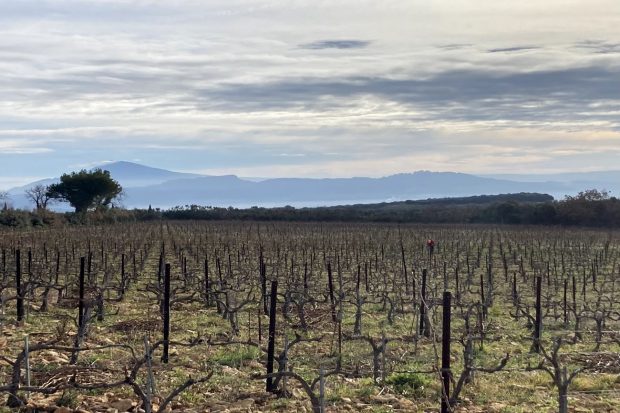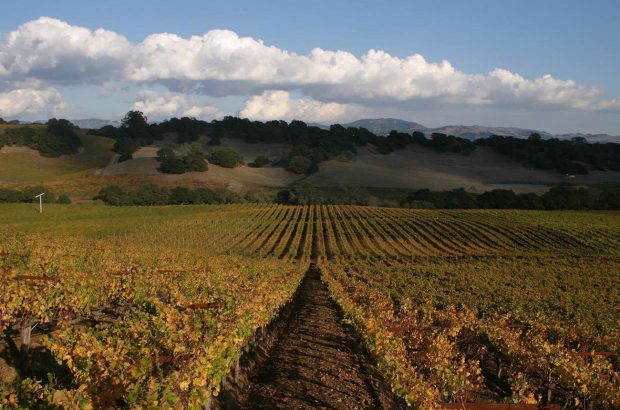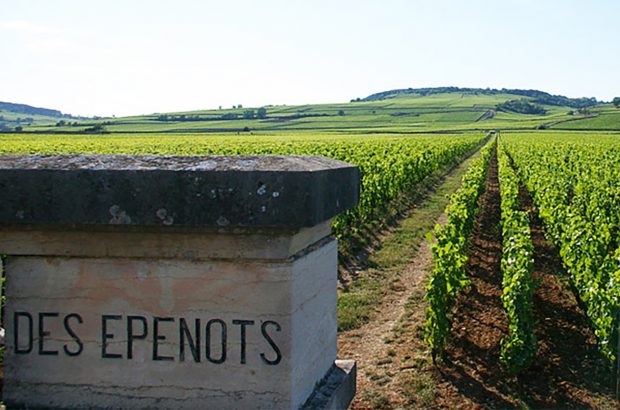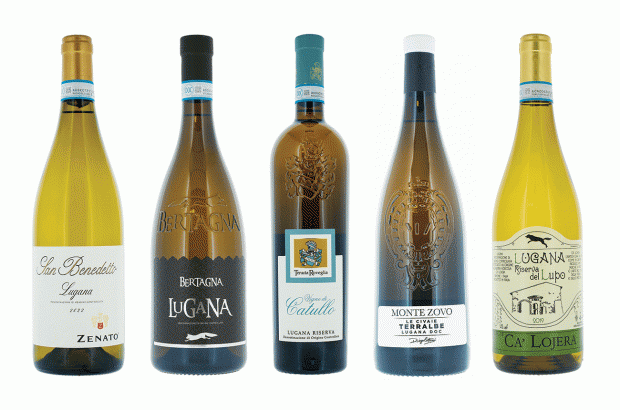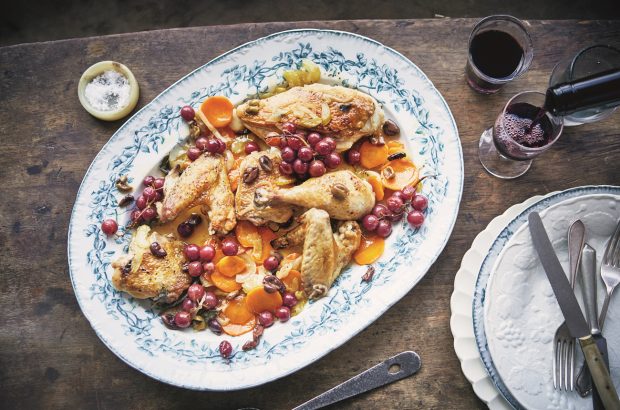Ever since a trip to the Rhine’s steepterraced vineyards last summer, I’ve been asking myself whether Germany’s wines are doomed to remain a niche category – one that inspires maniacal devotion only from wineworld insiders like me.
Everyone knows sommeliers are crazy for German Rieslings; from New York’s preacher of the gospel Paul Grieco at Terroir wine bar to the many who post Instagram photos of the rare ones they’ve enjoyed off-duty.
The country’s whites are supremely food-friendly. While premature oxidation plagues older white Burgundies, great aged Rieslings are amazingly consistent, and usually bargains. Not to mention the quality of recent vintages.
But in my informal sommelier poll, I was told Germany just doesn’t sell the way Burgundy does. And drinkers who eagerly lap up cuvées made from obscure grapes in Corsica or Georgia rarely know Germany has more to offer than Riesling (though thankfully they now know not all Rieslings are sweet).
{"content":"PHA+QW1vbmcgbXkgbWFueSB0cmlwIGRpc2NvdmVyaWVzIHdhcyB0aGUgZGVsaWNpb3VzbmVzcyBvZiB0aGUgY291bnRyeeKAmXMgb3RoZXIgd2hpdGVzLiBNYW55IGRyaW5rZXJzIGFyZSBzdXJwcmlzZWQgdG8gbGVhcm4gR2VybWFueSBpcyB0aGUgd29ybGTigJlzIGxlYWRpbmcgcHJvZHVjZXIgb2YgUGlub3QgQmxhbmMgKFdlaXNzYnVyZ3VuZGVyKS4gRHVyaW5nIGEgaHVzaGVkIGRheSBvZiBzaXBwaW5nIGFuZCBzcGl0dGluZyBhdCB0aGUgYW5udWFsIEdyb3NzZXMgR2V3w6RjaHMgdGFzdGluZyBpbiBXaWVzYmFkZW4sIEkgZm91bmQgbWFueSB0byBsaWtlLCBhcyB3ZWxsIGFzIHN1cGVyYiBicmlnaHQsIGZyZXNoIFN5bHZhbmVycywgbGlrZSB0aG9zZSBmcm9tIEbDvHJzdC1Mw7Z3ZW5zdGVpbiBhbmQgSG9yc3QgU2F1ZXIsIHRoYXQgaGF2ZSB0aGUgc2FtZSBhcHBlYWwgb2YgU2F1dmlnbm9uIEJsYW5jLCBidXQgbW9yZSBzdWJ0bGV0eS5TZXZlcmFsIHByb2R1Y2VycyBJIHZpc2l0ZWQgYXJlIGluIHN5bmMgd2l0aCB0aGUgd2luZSB6ZWl0Z2Vpc3QuIFBldGVyIEpha29iIEvDvGhu4oCZcyBicmlsbGlhbnQgUmllc2xpbmdzIGFyZSBzdXBlcmNoYXJnZWQgd2l0aCBlbmVyZ3kgYW5kIHNob3VsZCBjb252aW5jZSBvdGhlciBwcm9kdWNlcnMgdG8gdGFrZSB0aGUgYmlvZHluYW1pYyByb3V0ZSBoZSBjaGFtcGlvbnMuIEF0IEF1Z3VzdCBLZXNzZWxlcuKAmXMgd2luZXJ5LCBidWlsdCBpbnRvIGEgd2FsbCBvZiByb2NrLCBmaXZlIFBpbm90IE5vaXIgY3V2w6llcyBhY2NvdW50IGZvciAzMCUgb2YgcHJvZHVjdGlvbiBhbmQgdGhleeKAmXJlIHN1YnRsZSwgc2F2b3VyeSBhbmQgc21va3kuWWV0IHRoZSBhbW91bnQgb2YgR2VybWFuIHdpbmUgZXhwb3J0ZWQgdG8gdGhlIFVLIGhhcyBmYWxsZW7CoGJ5IDY0JSBzaW5jZSAyMDEwOyA0MCUgdG8gdGhlIFVTLiBUaGUgZ29vZCBuZXdzIGlzIGEgMTclIHVwdGljayBmcm9tIDIwMTYgdG8gMjAxNyBpbiB0aGUgVVMsIGluY2x1ZGluZyBhIHNpZ25pZmljYW50IGluY3JlYXNlIGluIEdlcm1hbiBzcGFya2xpbmcgd2luZS4gT25lIGltcG9ydGVyIHNheXMgR2VybWFuIHdpbmUgaXMgaGF2aW5nIOKAmGEgbW9tZW504oCZIOKAkyB0aGF0IGl04oCZcyB3aGVyZSBCdXJndW5keSB3YXMgMjAgeWVhcnMgYWdvIGJlZm9yZSBpdCBiZWNhbWUgd2luZSBsb3ZlcnPigJkgaG9seSBncmFpbC48L3A+CjxwPjxkaXYgY2xhc3M9ImFkLWNvbnRhaW5lciBhZC1jb250YWluZXItLW1vYmlsZSI+PGRpdiBpZD0icG9zdC1pbmxpbmUtMiIgY2xhc3M9ImlwYy1hZHZlcnQiPjwvZGl2PjwvZGl2PjwvcD4KPHA+T25lIHByb2JsZW0gaXMgd2hhdCBJIGNhbGwgdGhlIG5vLWdyZWF0LUdlcm1hbi1yZXN0YXVyYW50cy1vdXRzaWRlLUdlcm1hbnkgZmFjdG9yLiBTdXJlbHkgSXRhbGlhbiB3aW5l4oCZcyBwb3B1bGFyaXR5IGdyZXcgb3V0IG9mIHRoZSBwcm9saWZlcmF0aW9uIG9mIHRvcCBJdGFsaWFuIHJlc3RhdXJhbnRzIGFuZCB0aGUgY291bnRyeeKAmXMgYXBwZWFsIGFzIHJvbWFudGljIHRyYXZlbCBkZXN0aW5hdGlvbi48L3A+CjxwPlRoZXJlIGlzLCBzYWRseSwgbm8gPGVtPlVuZGVyIHRoZSBUdXNjYW4gU3VuIDwvZW0+ZmlsbSBjb3VudGVycGFydCB0byBib29zdCBpbnRlcmVzdCBpbiBhbnkgR2VybWFuIHdpbmUgcmVnaW9uLiBEZXNwaXRlIHRoZSBmYWlyeS10YWxlIGNhc3RsZXMgSSBzcG90dGVkIGZyb20gYSBib2F0IGRyaWZ0aW5nIGRvd24gdGhlIFJoaW5lLCBub25lIGhhcyBiZWVuIHRyYW5zZm9ybWVkIGludG8gYSBsYXZpc2ggU2l4IFNlbnNlcyBzdXBlci1sdXh1cnkgaG90ZWwgd2l0aCBhIHNwYSwgdmluZXlhcmQgZXhwZXJpZW5jZXMgYW5kIGFlcmlhbCB5b2dhIChkb27igJl0IGFzaykgbGlrZSBpdHMgbmV3IG9uZSBpbiBQb3J0dWdhbOKAmXMgRG91cm8gVmFsbGV5LjwvcD4KPHA+Tm9yIGFyZSB3aW5lLWZyaWVuZGx5IEdlcm1hbiBkaXNoZXMgZW1iZWRkZWQgaW4gb3VyIGNvbnNjaW91c25lc3MuIEJhdmFyaWFuIGJyYXR3dXJzdCBhbmQgc2Nobml0emVsIGVhdGVyaWVzIGZvY3VzIG9uIEdlcm1hbiBiZWVyLCBub3QgUmllc2xpbmcuIE9ubHkgcmVjZW50bHkgaGFzIGEgaGlnaC1lbmQsIHNlcmlvdXMgR2VybWFuIHJlc3RhdXJhbnQgb3BlbmVkIGluIE5ldyBZb3JrLiBIYWxmIHRoZSBsaXN0IGF0IE1pY2hlbGluIG9uZS1zdGFyIEfDvG50ZXIgU2VlZ2VyIE5ZIGlzIGRldm90ZWQgdG8gR2VybWFuIHdpbmUuIEVsc2V3aGVyZSB0aGV5IGdldCBhIGhhbGYtcGFnZSBpZiB0aGV54oCZcmUgbHVja3kuPC9wPgo8ZGl2IGNsYXNzPSJhZC1jb250YWluZXIgYWQtY29udGFpbmVyLS1tb2JpbGUiPjxkaXYgaWQ9InBvc3QtaW5saW5lLTMiIGNsYXNzPSJpcGMtYWR2ZXJ0Ij48L2Rpdj48L2Rpdj4KPHA+TWF5YmUgbW9yZSBpbXBvcnRhbnQgYXJlIHRoZSBsYWJlbHMuIFdpbmUgbG92ZXJzIHN0aWxsIHN1ZmZlciBmcm9tIGZlYXIgb2YgZ290aGljIHNjcmlwdCBhbmQgZGlmZmljdWx0LXRvLXByb25vdW5jZSBHZXJtYW4gbmFtZXMuIFRoZSBub24tb2ZmaWNpYWwgcHJlc3RpZ2UgY2F0ZWdvcnkgb2YgZHJ5IEdlcm1hbiB3aW5lcywgVkRQIEdyb3NzZXMgR2V3w6RjaHMgKEdHIG9uIGxhYmVscykgaXMgbm90IG5lYXJseSBhcyBlYXN5IHRvIHVuZGVyc3RhbmQg4oCTIG9yIHNheSDigJMgYXMgZ3JhbmQgY3J1LCBhbmQgdGhhdOKAmXMgb25seSBvbmUgb2YgbWFueSBjb21wbGljYXRlZCB0ZXJtcy4gVGhlIHBsZWFzdXJlcyBvZiB0aGUgd2luZXMgZ2V0IGxvc3QgYW1vbmcgdGhlIHVtbGF1dHMuIFRoYXTigJlzIHdoeSBBdWd1c3QgS2Vzc2VsZXIgYW5kIFBldGVyIEpha29iIEvDvGhuIHN3aXRjaGVkIHRvIG5ldywgc2ltcGxlciBhbmQgZWxlZ2FudGx5IG1vZGVybiBsYWJlbHMgZm9yIGFsbCB0aGVpciB3aW5lcyBpbiAyMDEyIGFuZCAyMDEzLCByZXNwZWN0aXZlbHkuPC9wPgo8cD5NYXliZSBjbGltYXRlIGNoYW5nZSB3aWxsIGJlIHRoZSB0aXBwaW5nIHBvaW50IHRoYXQgcHVzaGVzIEdlcm1hbiB3aW5lIGludG8gYSBicmlnaHRlciBzcG90bGlnaHQuIFdpdGggd2FybWVyIHN1bW1lcnMsIEdlcm1hbnnigJlzIFNww6R0YnVyZ3VuZGVycyBoYXZlIGJlY29tZSBtb3JlIGNvbnNpc3RlbnQgYW5kIGNvbXBsZXgsIHlldCByZXRhaW4gYSBjb29sIG1pbmVyYWxpdHkgYW5kIHNhdm91cnkgcXVhbGl0eSB0aGF0IG1ha2UgdGhlIGJlc3Qgc2VyaW91cyBhbHRlcm5hdGl2ZXMgdG8gQnVyZ3VuZHkuIExhc3QgeWVhciwgTmV3IFlvcmsgaW1wb3J0ZXIgTHlsZSBGYXNzIHRvbGQgbWUgaGlzIHNhbGVzIG9mIEdlcm1hbiBQaW5vdHMgd2VyZSB1cCAzMDAlLiBJdOKAmXMgYSBnb29kIHN0YXJ0LjwvcD4KPGRpdiBjbGFzcz0iYWQtY29udGFpbmVyIGFkLWNvbnRhaW5lci0tbW9iaWxlIj48ZGl2IGlkPSJwb3N0LWlubGluZS00IiBjbGFzcz0iaXBjLWFkdmVydCI+PC9kaXY+PC9kaXY+CjxwPgo="}
What I’ve been drinking this month
Before wildfires descended on northern California wine country, I was in Napa. Ashes & Diamonds is a fascinating new project and its Vineyard 1 Cabernet Sauvignon 2015 is winemaker Steve Matthiasson’s recreation of a typical Napa Cab from the 1960s. It’s super savoury and herbal, with a long finish, and only 12.6% alcohol. The grapes come from the historic Rutherford vineyard George III and, in keeping with wines of the era, it was aged in a mix of French and American oak. It’s a fitting red to drink to the region’s recovery.







